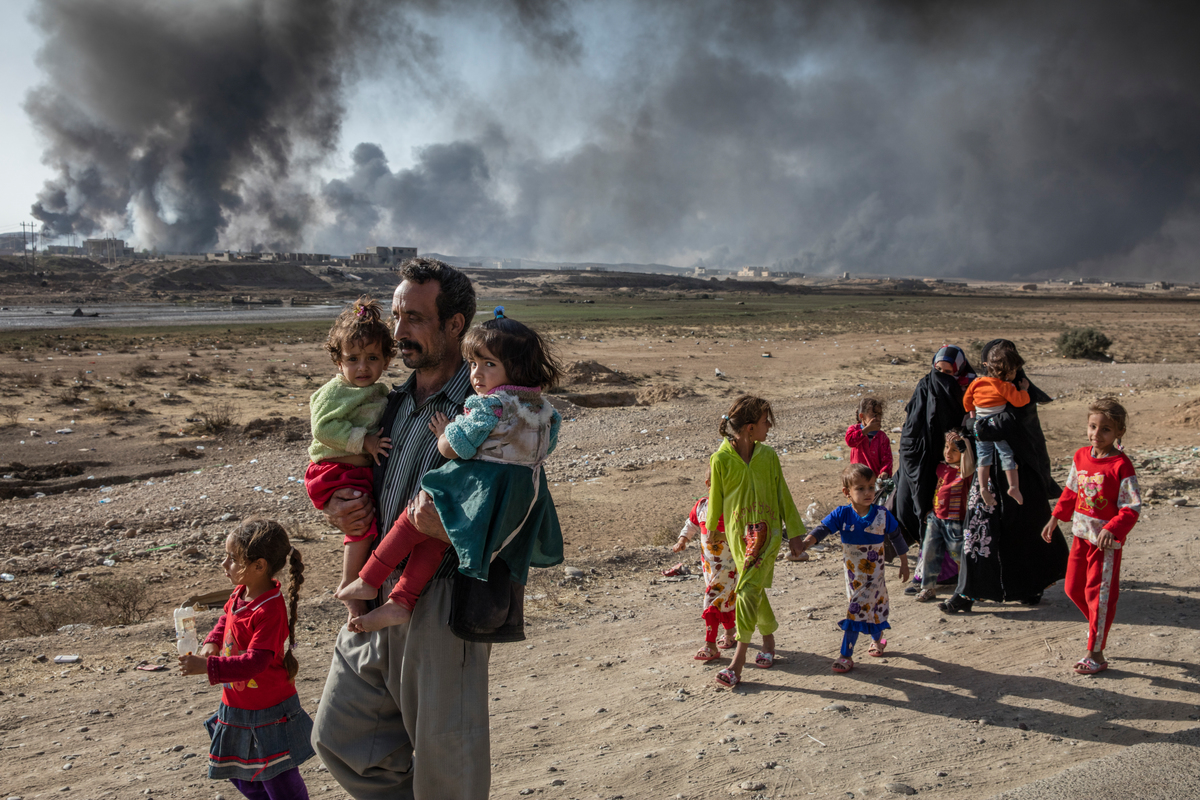New 2002 asylum statistics for industrialized countries
New 2002 asylum statistics for industrialized countries
New year-end statistics compiled by UNHCR show that asylum applications in industrialized countries in 2002 fell by 5.4 percent compared to 2001. The decline was in large part due to a dramatic drop in the number of Afghans seeking asylum. The total number of new asylum seekers in the European Union also dropped, though by a smaller margin.
The new statistics, which are provisional, show that some 587,400 asylum claims from all nationalities were lodged in 37 industrialized countries in 2002, compared to 621,100 claims filed the previous year. This is against a background of some 13 million refugees and asylum-seekers throughout the entire world at the end of 2001, most of them in developing countries.
The number of Afghan asylum applications in industrialized countries in 2002 fell by 51 percent to 25,700, compared to 52,800 in 2001. As a result, Afghans dropped from being the largest national group seeking asylum in industrialized countries in 2001 to the fifth largest group in 2002.
They have been replaced at the top of the list by Iraqi asylum-seekers. In 2002, 51,000 Iraqis applied for asylum in industrialized countries, up fractionally from 2001 (50,400). The Federal Republic of Yugoslavia (now Serbia and Montenegro) was the second largest country of origin with 33,100, followed by Turkey (29,600), China (26,300), and Afghanistan (25,700). The cumulative totals from the past three years also show Iraqis way out in front with 146,000 asylum applications, followed by Afghans and Yugoslavs (both with 110,000).
In terms of percentage changes, Zimbabweans showed the biggest increase in 2002, up by 83 percent on 2001 with a total of 8,600 applications, followed by asylum-seekers from Cameroon (up 51 percent to 5,000), Slovakia (up 47 percent to 4,100), Nigeria (up 35 percent to 13,600) and Georgia (up 32 percent 8,300).
The biggest decreases after the Afghans were by asylum-seekers from Sierra Leone (down 43 percent to 6,100), Viet Nam (down 32 percent to 4,300), Ukraine (down 31 percent to 7,300) and Sri Lanka (down 30 percent to 10,200).
The largest recipients of asylum-seekers among the industrialized countries in 2002 were the United Kingdom (111,000), followed by the United States (81,000), Germany (71,000), France (51,000) and Austria (37,000). Relative to the size of its population, however, Austria received the largest ratio of asylum-seekers, followed by Norway, Sweden, Switzerland and Ireland.
In the European Union, the total number of asylum applications fell by 2 percent, with 381,600 claims lodged in the 15 countries. Some individual EU member states, however, showed increases in asylum applications received, including Finland and Luxembourg (up 109 percent and 52 percent respectively, but from a relatively low base), Sweden (up by 40 percent) Austria (up 23 percent) and the UK (up 20 percent).
By contrast, Denmark was down by 53 percent, the Netherlands by 43 percent, Spain by 35 percent, Italy by 24 percent and Belgium by 23 percent.
Taken as a group, the Central European countries saw a decrease in the numbers of asylum seekers for the first time since 1994, when asylum systems were still rudimentary or non-existent. Claims fell by 26 percent to a total of 34,800, bringing the numbers back to the level in the year 2000.
In industrialized countries outside of Europe, asylum applications fell even more sharply. Australia and New Zealand saw a decrease of 50 percent, while North America registered an 11 percent decline. Japan dropped 29 percent from an extremely low base.








